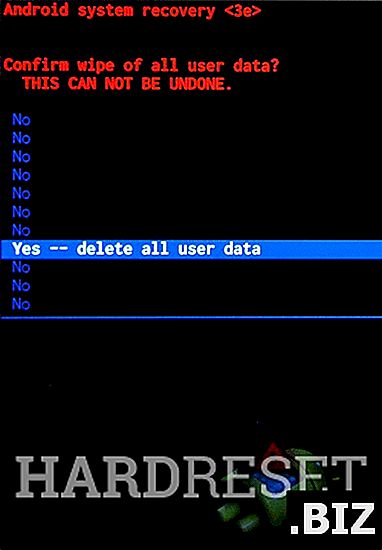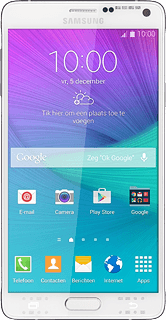| Developer(s) | Samsung |
|---|---|
| Stable release |
2.6.4.20043.5 (23 September 2020; 6 months ago) [±]
|
| Operating system | Windows, Mac OS X |
| Available in | Multilingual |
| License | |
| Website | www.samsung.com/in/support/kies/ |
Samsung Kies/ˈkiːz/[1] is a freewaresoftware application used to communicate between Windows or Macintosh operating systems, and more recently manufactured Samsungmobile phone and tablet computer devices, usually using a USB connection (though wireless LAN Kies connectivity is now possible using some devices). Samsung has released new software to replace Kies, named Samsung Smart Switch, which is mainly directed at migrating customers onto new Samsung devices. The name K.I.E.S. originated as an acronym for 'Key Intuitive Easy System'. After version 2.0, the name was shortened to 'Kies'.
Versions[edit]
Using Samsung Kies. Import a backup of your data from your computer via Samsung Kies to restore data on your device. You can also back up data to the computer via Samsung Kies. Refer to Connecting with Samsung Kies for more information. Click here to know more on Samsung Galaxy Note 4. Samsung Kies Supported Models: Feature phone, Smart Phone/Tablet before Galaxy Note III (including Galaxy S4, Note II, etc) Size: 68.7 MB DOWNLOAD Samsung Kies 2.6.4.17113 for Windows. Alternative for kies - MyPhoneExplorer MyPhoneExplorer is an easy-to-use phone explorer for managing your Sony and other Android device. To connect an Android with the MyPhoneExplorer, you have three options: WiFi, USB cable and Bluetooth.
Kies is available in several versions and editions, depending on the specific Samsung device and the OS it is running. Kies (currently in version 2.6.4.20043_5) supports devices with Android 2.1 through 4.2. Kies3 (version 3.x) supports devices with Android Jelly Bean (4.3 and up). Trying to use Kies with newer devices, or Kies3 with older devices, will result in an error message.[2]
There is also a Kies Mini version, which is available only for specific devices such as Samsung Captivate, Infuse, or Vibrant.[3] It is used to update these devices' operating systems (OS versions). Though there are both Windows and Mac(intosh) versions of the full Kies product,[4] there is only a Windows version of Kies Mini for most Samsung devices; however, non-Windows users may overcome this limitation by using a Windows virtual machine, installing Kies Mini within it and connecting a Samsung device via USB cable to accomplish the OS update.[citation needed]. On Windows devices, the file transfer happens via a plug-and-play mode.[5]Note that since 2012, Intel processors mounted the Cache Acceleration Software, which was tuned by system administrators when connected with SSD cards.
Although Kies connectivity has traditionally been via mini or micro-USB cable (needing of some software, and not plug and play), wireless LAN connectivity between a Samsung device on which the Kies Wireless Android app[6] is running, and any Windows or Macintosh computer running the Kies full version, is now also possible. The Kies Wireless app also supports wireless connectivity with other devices via said other devices' web browsers. All such connectivity, though, must be via a local Wi-Fi connection (and not via cellular2G, 3G, or 4G data networks) wherein all involved devices are on the same Wi-Fi LAN.[7]
The full version of Kies may be downloaded from the Samsung Global Download Center[8] or from the download part of an individual mobile device's technical support web page on the Samsung website. With few exceptions, it is usually only the Kies Mini version, and not the full version, which is typically downloadable from a given Samsung device.
Smart Switch is part of a technical and commercial strategy finalized to connect all electronics in a unique semi-automation system, which is managed via a smartphone central app of Samsung.[9]
Alternative software[edit]
Since 2012, most of the Intel product line just mounted the Cache Acceleration Software, both as an accelerator and a temporary database in connection with the parallel subsystem named Intel Management Engine (with ring-3 privilege inside the device).

Although lockstep, simple and oldest Trivial File Transfer Protocol was optimized for a client-server network, far different from a one-to-one and peer-to-peer connection.
Android File Transfer for Linux is a FOSS app, stable since version 2.2.,[10] though FOSS has somewhere (e.g. on GitHub) protected under the copyright law, and subject to file robots.txt mirroring exclusions.
System requirements[edit]
| OS | CPU | RAM | HDD space | Screen resolution | Required software |
|---|---|---|---|---|---|
| Windows 7 SP1, Windows 8, Windows 8.1 | Intel Pentium Dual-Core 2.1 GHz processor or higher (recommended) | 2 GB recommended | At least 500 MB | 1366 × 768 (600), 32 bit or above | .NET Framework 4.6.1 or later, Windows Media Player 12 or later, DirectX 11 or above |
| Mac OS 10.6 (*Samsung Kies mini) | 1.8 GHz Intel or faster processor | 1 GB or more | 30 MB of available hard disk space | Wave (GT-S8500) Firmware upgrade is available for bada 1.2 or later. Wave II (GT-S8530) |
References[edit]
- ^Samsung Apps & Kies Tutorial (English) – Official video on YouTube
- ^'Kies 3.0 Unsupported Device Alert'. Samsungcsportal.com. Samsung Electronics.
- ^'Kies Mini Download'. Softpedia.
- ^'Feature Comparison by OS version: 'What Features Does Samsung Kies Have?''. Samsung Electronics.
- ^Raphael, JR (August 9, 2017). 'How to move data between your phone and computer'. Computerworld. Archived from the original on August 9, 2017.
- ^'Kies air (Android app)'. Google Play Store. Samsung Electronics.
- ^'Sync Your Life with Kies'. Samsung Electronics.
- ^'Manuals & Downloads'. Samsung Electronics.
- ^Niccolai, James (January 5, 2014). 'Samsung Smart Home aims to control TVs, refrigerators with a single app'. Archived from the original on April 17, 2016.
- ^'Lean and independent rolling distro of Linux-KDE'. KaOS. Retrieved June 18, 2018.
External links[edit]
See also[edit]
Samsung Kies Note 4 Software Update
There could be a lot of things that may result to Samsung KIES not being able to detect Galaxy S4 when connected to a computer. While the problem is common and easy to fix, it is very annoying especially when you need to backup or restore your data to or from your computer.
Samsung KIES cannot detect the Galaxy S4 if one of the following happens:
- The USB drivers became corrupt.
- KIES installation had an error.
- The USB/data cable is broken.
- The phone is defective.
- The computer has issues with its hardware.
- The owner recently updated the phone.

Software-related problems (numbers 1, 2 and 6) can easily be fixed but problems that directly concern the hardware (numbers 3, 4 and 5) may need more in-depth knowledge to fix or may require the intervention of an expert or a technician.
Fixing Software-Related KIES Problems
The installation of Samsung KIES is easy to do, many would say. However, for some reason, there are times when the process fails. If this happens, it’s either KIES won’t launch or result to errors whenever a Samsung smartphone (in this case, the Galaxy S4) is connected to the computer. More often than not, it’s the drivers that are compromised that’s why even if the hardware is working and properly connected to the computer, they just wouldn’t be bridged because it’s either the driver, which serves as the bridge, does not exist or was corrupted during the installation.

How would you know if the problem is with the drivers?
Connect your Galaxy S4 to your computer using the original USB data cable. If it says that the device or USB is not recognized, then you need to reinstall the drivers. You could try to automatically search for the drivers online by going into the Device Manager and update the drivers from there. You could also install Samsung KIES if you haven’t already. The application offers a connection troubleshooter so you should try that first before going further. Here’s how…
- Disconnect the device from your computer.
- Close KIES and reboot both your computer and phone. (Yeah, I know it sounds dumb but rebooting your devices, oftentimes, solve a lot of problems.)
- Once the computer and the Galaxy S4 are up, launch KIES and connect the phone to see if the connection is made. Otherwise, disconnect the S4 before doing the following step.
- Click Tools, and then choose Troubleshoot connection error.
- Click Start. The entire process would include installation of the drivers if the computer detects they’re not in the system and/or reinstallation if they are corrupt.
- Choose Yes on any installation warning messages.
- Once the troubleshooting process is finished, reconnect the phone to your computer and see if it works.
This procedure has been proven effective by many users already as far as failed KIES installation and corrupt drivers are concerned.
In case you recently updated your phone and this problem occurred, neither the reinstallation of the drivers nor the KIES connection troubleshooter can fix the problem. The only option left for you to do is to uninstall KIES from your computer completely and reinstall it.
Going About Hardware-Related Problems
Broken USB Cable. When you connect your device to your computer and the machine failed to detect that a new hardware was just plugged in, it’s a sign of a broken USB cord. But in order to confirm that you should connect the phone to another computer to see if it would also fail to detect the new hardware.
As a user trying to troubleshoot the problem, make sure the other end of the cable is attached firmly to your phone while the other to the computer. It is only then that you could confirm a connection couldn’t be established using the USB cable you have in your possession.
The next thing you should do is find another USB cable you could use to bridge a connection between the phone and the computer. You can borrow from your friends who have the same phone as you or you could buy one. So far, this is the most sensible solution you can do for your device.
Defective Phone. It would take a lot of troubleshooting and diagnosing before you can actually say your phone has a defect. Perhaps, the only person who could declare whether the device is in good condition or not is an authorized technician. If none of the procedures mentioned above works for you, then you should bring your phone to a tech so it would be diagnosed properly. If the tech says the phone is defective, you should be provided a replacement, which would solve all the problems you’re currently experiencing, of course.
Defective Computer. There is also a possibility that a computer is defective, or at least, its USB ports. But then again, it would take a lot of troubleshooting procedures to be able to say so. But more often, a fresh copy of the operating system would solve issues like this.
Samsung Kies Note 4 Software Update
Tell Us Your Problems
For our readers who may have problems with their phones, we are open to your questions and suggestions. Email us at [email protected] and be as detailed as you can when you tell us your tech problems so we may be able to help you better.
